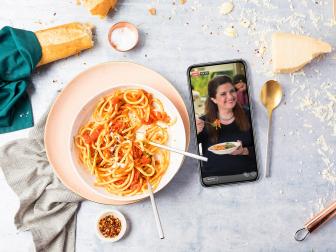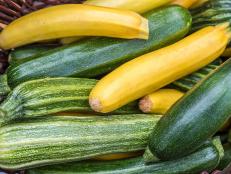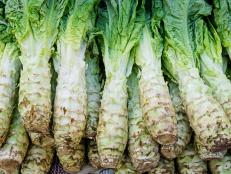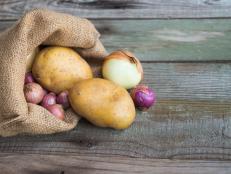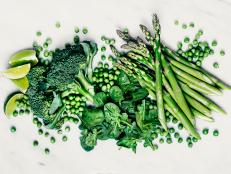5 Must-Know Tips About Kabocha Squash
Jet Tila will teach you everything you need to know, from how to pick the best squash to how to cut and roast it to perfection.

Get a Premium Subscription to the Food Network Kitchen App
Download Food Network Kitchen to sign up and get access to live and on-demand cooking classes, in-app grocery ordering, meal planning, an organized place to save all your recipes and much more.
Fall is an undeniably delicious season, ripe with all manner of squash. Though while you're excited to browse the farmers market and visit the pumpkin patch, are you also unsure about how to put those seasonal beauties to good use? No worries! Thanks to Jet Tila, you'll no longer have to wonder what to do with a kabocha squash. In his class Everything You Should Know About Kabocha Squash on the Food Network Kitchen app, he truly shares everything from how to pick the best one to how to turn it into a holiday-worthy dish.
1. The best kabocha squash is heavy for its size.
A kabocha squash is about the same size as a sugar pumpkin, though flatter (and not orange!). Botanically, a kabocha squash is a fruit and, as is the case with most fruits, Jet says, you want one that is heavy for its size. Once you get it home, you can store it in the fridge for 30 to 40 days.
2. You can eat the skin!
And that means less work for you. Kabocha squash is sweet; if you love sweet potatoes and yams, you will love kabocha squash. It stays sweet throughout cooking and keeps its creamy texture, unlike an acorn or delicata squash, which both tend to get wet during cooking.
3. A towel makes cutting a kabocha squash SO much easier.
Pull off the stem and place your kabocha squash, flat-side down, on a firm surface — you don't want it to roll around! You'll notice there is a soft spot near the center of the squash, near where you pulled off the stem, and that is where you'll push down your knife to cut the squash in half. Using a clean kitchen towel to hold the squash where the knife tip will come up when you're slicing will help keep the squash in place.
4. You should always roast it with the skin facing out.
Jet arranges his cut kabocha squash with the thicker sides facing out. In an oven, Jet says, air is circulating, which means the squash will cook from the outside (the skin side) in and be less likely to burn.
5. It's fitting for a weeknight but delicious enough to serve for Thanksgiving (or any holiday meal, really).
Kabocha squash is a versatile ingredient that is great in everything from lasagna to pie. Jet suggests stuffing, stewing and roasting kabocha squash, as well as turning it into a rice or grain bowl. And he says kabocha squash tempura is his favorite form of tempura, so get creative! There's a kabocha squash recipe out there for everyone.
Related Links:
























